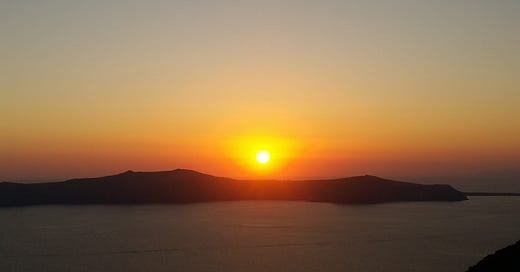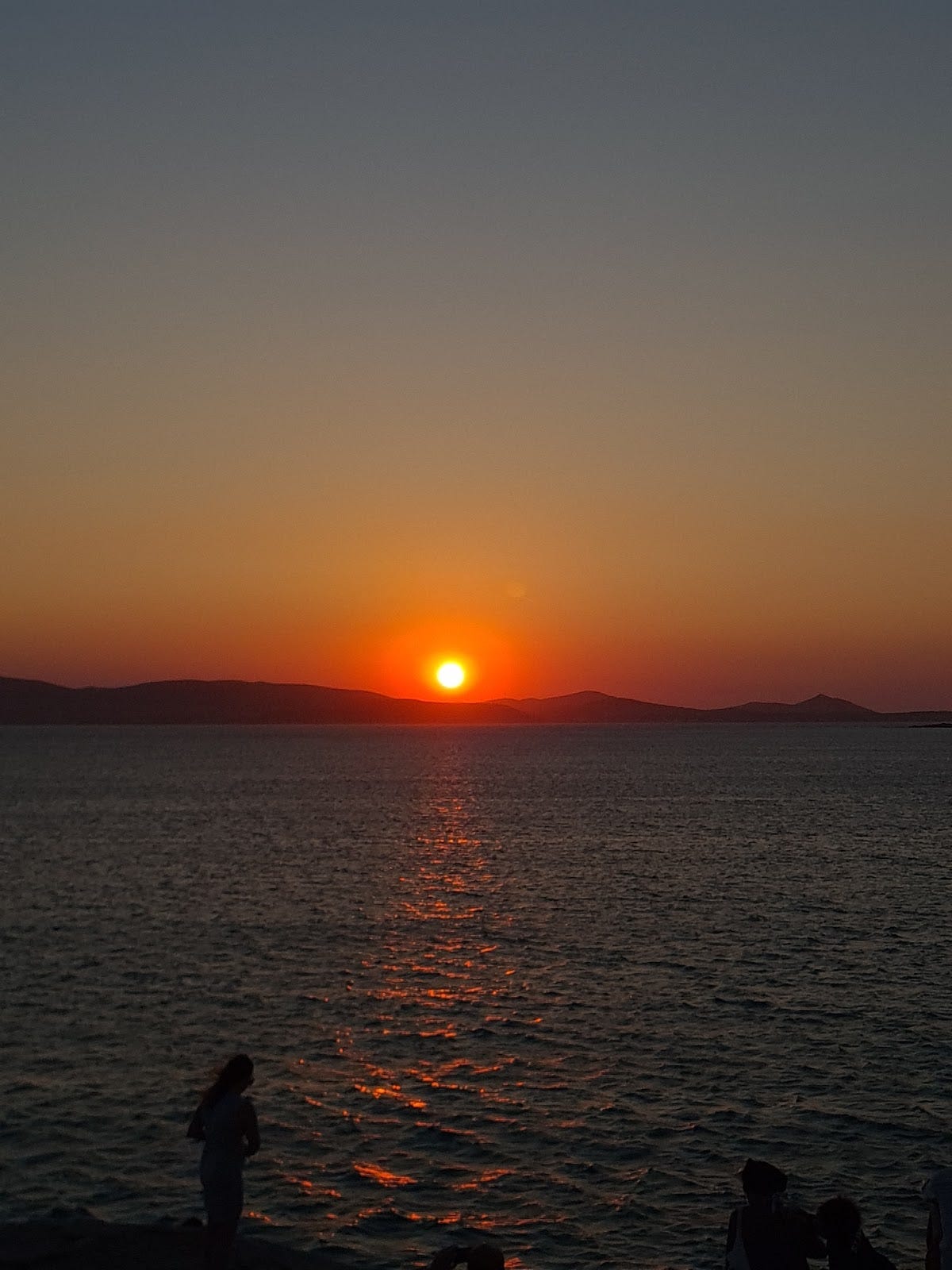It is the end of July, and you are looking forward to your ideal holiday in Santorini. You have saved a lot of money so you can afford the very expensive cost of visiting this lovely island. You are dreaming for the moment to see this amazing sunset pictured in all the social media posts of the travel influencers. The moment is here, dressed up all ready for your selfie, for the ideal romantic moment.
Sunset in Santorini 2018
But it is not ideal at all, there are thousands of people already there before you, everyone is pushing each other to go as close to the cliff as possible, drones are flying all over your head making this characteristic and awfully annoying noise, everyone is trying to take the perfect picture, people are doing live streaming, others video call their families and yes the romance is lost, making you think, was that moment for which you spent all that money really worth it ?
Crowds gathered to take a pic of the sunset in Santorini
Santorini is one of the places that faces overtourism, a phenomenon that occurs when there are too many visitors in a particular destination. And of course tourism brings money to a country’s economy; the more tourists, the more money flows in a country and the higher will be the economic growth in a country. A situation that has supported the Mediterranean economies in the years after the COVID-19 pandemic. But have we ever thought about the impact of over tourism on the local economy, environment and local people of these beautiful places that all of us want to visit?
Let’s take the case of Santorini, a volcanic island in the Aegean sea, which is the site of one of the largest volcanic eruptions ever recorded in history, which destroyed the Minoan civilisation. Despite the disruption, the volcano has blessed the island with soil rich in nutrients and minerals that allowed the island to produce excellent quality wine and tomatoes. Literally one of the best in the world.
It is undeniable that tourism supported the economy of Santorini, the island’s economy was declining after World War 2, while industry and manufacturing were moving away from the rural areas of Greece to big cities like Athens. The disastrous earthquake in 1956 left the island wounded with the houses and infrastructure damaged, and the majority of the population abandoning the island. The increase in tourism in the island during the 1970s supported the local economy and the income flow encouraging residents on the island to rebuild and flourish.
Santorini after the earthquake in 1956, source: Athens News
Tourists in Santorini during the 1980s waiting for the bus. You can notice the first motorcycles hired in the Island. The picture portrays a different reality from today, lower volumes of tourism and a more calm way of life.
To support the tourism economy, all of the other industries in the island started declining. The need for tourist accommodation and other hospitality facilities put at risk the renowned wine production of the island, as the land that used to be used for wine production these days has been used for further infrastructure. Production of Santorini grapes has dropped almost 50% in the last 20 years, with an average 2.7% drop per year, according to data collected by the Association of Winemakers of Santorini. The production, according to the island’s winemakers, is in danger of dropping to zero by 2041 if there’s no intervention of some form (and a real loss of the best variety of wines).
That is not the only problem, Santorini is an island far away from the mainland of Greece, and during the Summer heatwaves it is struggling to meet the water needs of the citizens. And how an island that barely has the infrastructure to support 15,500 permanent residents can support 11,000 extra tourists in a day that visit from cruise ships, plus all the other tourists that live in luxury accommodations with private pools and hot tubs.
It is not that tourism is bad for the island or Greece, no-one can deny the benefits of tourism for the Greek economy. The issue is when small places like Santorini have to facilitate 3.2 million tourists per year. That cannot be done without reducing other industries, affecting the environment or damaging the heritage and tradition of the island.
Greece is thinking about a couple of solutions that could help. That includes limits on the number of cruise ships and the total number of passengers to be kept at 8,000. Locals suggest that better management from the operators also is required, for example better distribution of cruise ship visitors during the week, or tourists to take advantage of other parts of the island such as the south part of the island which hasn’t been as affected by overtourism.
Overturism is not a phenomenon that is happening only to Greece, Barcelona is facing a big housing crisis because of the increased tourism accommodation in the city, Venice has a very similar problem to Santorini with tens of millions of visitors every year, and Amsterdam has a big issue with “party tourism”. Several policies are on the plate like introducing taxes, which Venice has introduced the last couple of years but with not so much success.
The solution of course is not harassing tourists, but some of the recent events in Spain portray the frustration of the locals and the impact of overturism to their quality of life. There are ways to balance economic benefits and tourism and many governments have started acting on them. Till a solution is found, and if you don’t like crowds like me, you can choose any other of the 227 inhabited islands in Greece, i promise you the sunset will be amazing in any of them.
Sunset in Naxos 2023









